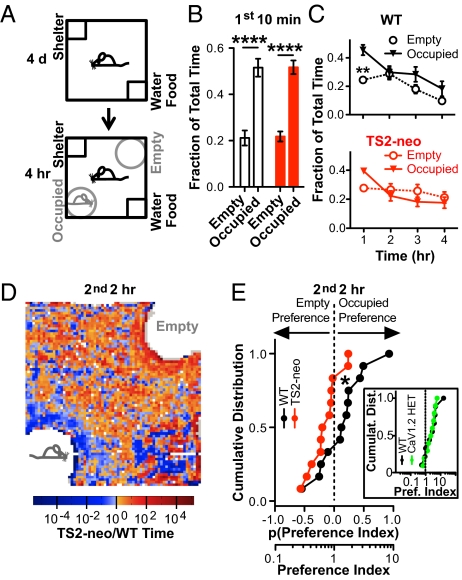Fig. 5.
TS2-neo mice displayed decreased preference for a social object in an automated social home-cage assay. (A) After a 4-d exposure to a home-cage with shelter and water/food, empty and occupied corrals were presented in opposite corners. (B) During initial 10 min, both genotypes preferred to stay close to occupied corral than near empty corral (P < 0.0001 for corral effect, ANOVA). (C) Whereas WT mice displayed significant preference for the occupied vs. the empty corral during the first full hour (P < 0.01, Bonferroni post hoc test), and a trend for similar preference over the last 3 h, TS2-neo mice showed a trend for preference for the occupied corral during the first full hour and opposite preference for the last 3 h. (D) Intensity map of last 2 h, depicting spatial distribution of TS2-neo:WT time ratio (red/blue for increased/decreased TS2-neo dwell time, respectively). (E) Cumulative distribution of preference index for last 2 h. TS2-neo mice showed significantly less preference for the occupied corral than WT mice (P = 0.04, Student's t test). n (each genotype) = 12. (Inset) CaV1.2+/− mice show the same preference for the occupied corral as WT. n (WT) = 9, n (CaV1.2+/−) = 10.

